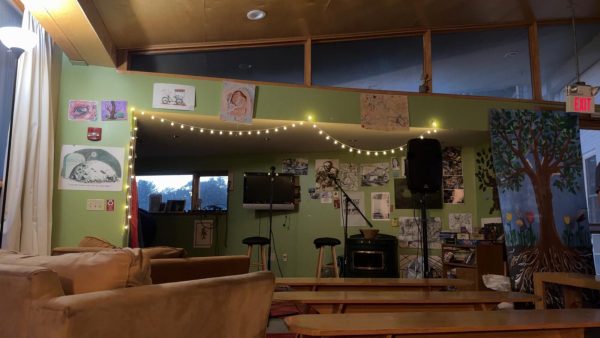Our Languages Belong Here: Indigenous Language Revitalization in Urban Contexts, Lindsay Morcom, Clarke Forum
On Tuesday, September 14, Lindsay Morcom, an associate professor and Canada Research Chair in Language Revitalization and Decolonizing Education at Queen’s University, gave a virtual talk at Dickinson College about the importance of protecting and revitalizing the Indigenous languages in urban contexts with a focus on the Indigenous languages of Turtle Island.
Dr. Morcom is an interdisciplinary researcher and received her Master’s degree in linguistics at First Nations University through the University of Regina. She later received her doctorate degree in general linguistics and comparative philology as a Rhodes Scholar at Oxford University. She is of mixed Anishnaabe, Black Sea German, and French heritage.
Dr. Morcom started by talking about her own heritage and the responsibility that comes with it to defend her culture. She then went on to discuss the importance of the Indigenous languages and what they bring to our world. She explained the distinction between language families, isolates (that are very rare), and dialects.
Nicholas Flood Davin, a former member of the Canadian Parliament, advised the federal government to institute residential schools for Indigenous people in 1879. Dr. Morcom presented the audience with shocking statistics depicting that the mortality rates in those residential schools were higher than those concerning soldiers. A present day example was the recent discovery of the remains of 215 Indigenous children in Canada’s largest residential school.
Dr. Morcom explained that Canada is currently trying to reconcile the past, and one way they are doing that is by introducing immersive education that allows Indigenous kids to learn their native language as well as English or French. This not only revitalizes the language but also helps them with language development, gives them a sense of community, reintroduces them to their spiritual background, and makes them discover their cultural heritage “as lived and not performed.” That is, it has become popular for businesses to contact some indigenous people to present their “culture” during performances. The intention behind such collaborations is to entertain instead of educate.
Activists, such as Lindsay Morcom, made it their life mission to fight such misconceptions, starting from talks like the one given at Dickinson College to bigger projects like Kingston Indigenous Language Nest (KILN), which she cofounded. It began in 2014 around a kitchen table with about 8 people listening to music and focusing on locally present languages. Now this project has multiple partnerships, offers language lessons, and creates a community supporting native language learning. This community-building required strategizing and perceiving diversity as a strength.
It has been a long way for Dr. Morcom, but it is nowhere near the end. She argues that we do not need to be activists to help revitalize Indigenous languages. She believes that we all have responsibilities we need to understand and the smallest efforts can make a difference. During the Q&A session, a student asked Dr. Morcom if as a settler it was acceptable to learn an Indigenous language and in what way it would be correct to approach Indigenous people and try to connect to their culture without offending them. The response was to “do that research and approach communities with an attitude of learning and reciprocity.”




